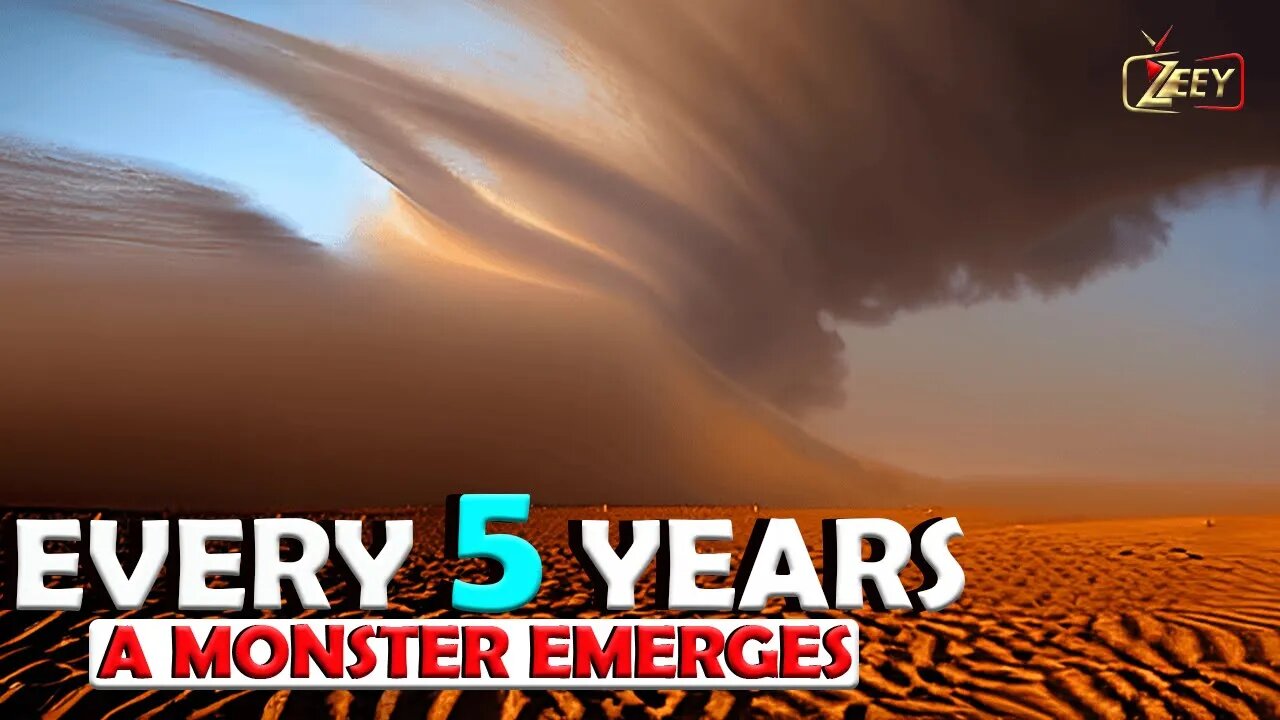Premium Only Content

Mars performs an event every five years that has never occurred on another planet before | Zeey
#MarsWeather#RedPlanet#MarsStorms
Mars is known for its frequent and sometimes massive dust storms. These storms can cover the entire planet and last for days, weeks, or even months. Here are some key points about Mars dust storms:
Frequency: Dust storms on Mars are relatively common, and they can occur throughout the year. However, they are more prevalent during the planet's southern spring and summer, which corresponds to the northern fall and winter.
Causes: Mars has a thin atmosphere composed mostly of carbon dioxide, with only about 1% of Earth's atmospheric density. The low atmospheric pressure allows for more variation in temperature and can lead to strong winds. Dust storms are often triggered by local thermal circulations and can be amplified by global weather patterns.
Seasonal Variation: Mars has a significant axial tilt, similar to Earth. This tilt, combined with its elliptical orbit, leads to seasonal variations that influence the planet's weather. The changing seasons contribute to the occurrence and intensity of dust storms.
Local and Global Storms: Dust storms on Mars can be classified into two main types: local storms and global storms. Local storms are smaller in scale and primarily affect specific regions. Global storms, on the other hand, can envelop the entire planet, obscuring its surface from view. Global dust storms are less frequent but can have a more profound impact on the Martian atmosphere.
Impact on Rovers and Spacecraft: Dust storms pose challenges for robotic missions on Mars, such as the rovers operated by NASA. These storms can reduce sunlight reaching the surface, affecting solar-powered rovers' energy production. Additionally, the fine dust particles can settle on the rovers' solar panels, reducing their efficiency.
Observations from Earth: Dust storms on Mars are often observable from Earth with telescopes. Astronomers track these storms to study Martian weather patterns and to gain insights into the planet's atmospheric dynamics.
Understanding Mars dust storms is crucial for planning and operating missions to the planet, as well as for gaining insights into the atmospheric processes of other planets with thin atmospheres.
#SpaceWeather#MarsExploration#DustStorms#PlanetaryScience#MarsRovers#MartianAtmosphere#SpaceDiscovery#NASAInsight#Astrobiology#SpaceExploration#SolarSystem#MartianClimate#OuterSpaceNews
#SpaceWeatherForecast#MarsWeather#RedPlanet#MarsStorms#MartianSurface#SpaceMissions#CelestialPhenomena
-
 LIVE
LIVE
TheAlecLaceShow
1 hour agoGuests: Alex Marlow & Terry Schilling | Justice For Laken Riley | Russian ICBM | The Alec Lace Show
53 watching -
 LIVE
LIVE
Danny Haiphong
1 hour agoMARK SLEBODA & SCOTT RITTER: NATO ATTACKS RUSSIA, PUTIN FIRES ICBM WARNING SHOT AT UKRAINE—WW3 NEXT?
256 watching -
 40:47
40:47
Dave Portnoy
4 hours agoThe Unnamed Show With Dave Portnoy, Kirk Minihane, Ryan Whitney - Episode 37
10.7K1 -
 51:53
51:53
The Rubin Report
1 hour agoCrowd Shocked by Ben Affleck’s Unexpected Take on This Massive Change
24.7K19 -
 2:07:25
2:07:25
Steven Crowder
4 hours agoBREAKING: Russia Launches ICBM for First Time in History - What Happens Next?
297K163 -
 LIVE
LIVE
The Shannon Joy Show
4 hours ago🔥🔥While Americans Are Watching WWE Politics: Australia Is Ramping Up MANDATORY Digital ID🔥🔥
452 watching -
 LIVE
LIVE
LFA TV
14 hours agoTHE FIGHT IN ONLY BEGINNING! | LIVE FROM AMERICA 11.21.24 11am EST
5,516 watching -
 1:18:10
1:18:10
Graham Allen
5 hours agoPutin Vows Peace With Trump But WAR Under Biden!! + 400,000 Kids Are MISSING?!
97.6K180 -
 2:11:07
2:11:07
Matt Kohrs
12 hours agoMSTR Squeezes Higher, Bitcoin To $100k & Nvidia Post Earnings || The MK Show
47.6K1 -
 42:07
42:07
BonginoReport
6 hours agoNikki Haley's Hatred of Tulsi Gabbard Just Made Me a Bigger Fan (Ep.90) - 11/21/24
98.5K209